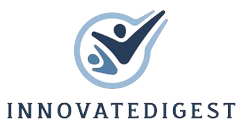What are the best practices for continuing education in IT?

In the ever-evolving world of Information Technology (IT), staying current with new developments is imperative. Continuing education in IT is not just beneficial—it’s necessary. This article delves into the best practices for continuing education in IT, ensuring that professionals remain adept and competitive in their field.
Importance of Continuing Education in IT
With rapid technological advancements, IT professionals must continually update their skills and knowledge. Not only does continuing education help meet job requirements, but it also keeps professionals prepared for future opportunities.
| Why It is Important | Benefits |
|---|---|
| Innovation | Stay current with industry trends and technological advancements |
| Career Growth | Enhance job prospects and performance reviews |
| Compliance | Meet the evolving regulations and standards |
Best Practices for Continuing Education in IT
1. Enroll in Online Courses
One of the most accessible and flexible ways to continue education in IT is through online courses. Platforms such as Coursera, Udemy, and edX offer a plethora of IT-related courses taught by industry experts.
- Choose courses that align with your career goals.
- Set aside dedicated study time to ensure consistent progress.
- Engage in interactive elements like quizzes and forums to deepen understanding.
2. Obtain Certifications
Certifications validate your skills and knowledge. They are often recognized by employers as a testament to your expertise. Popular IT certifications include:
- CompTIA A+
- Certified Information Systems Security Professional (CISSP)
- Microsoft Certified Solutions Expert (MCSE)
- Amazon Web Services (AWS) Certified Solutions Architect
3. Attend Workshops and Conferences
Workshops and conferences offer live, hands-on experiences. They also provide excellent networking opportunities. Consider attending events such as:
- Black Hat Conferences
- Google I/O
- Apple WWDC
- Microsoft Ignite
4. Participate in Webinars
Webinars offer the convenience of learning from home while accessing live presentations from industry leaders. Keep an eye on reputable sources like:
- TechCrunch
- InformationWeek
- Reddit’s r/ITCareerQuestions
5. Join Professional Associations
Being part of a professional association provides resources, networking, and opportunities for continuous learning. Notable associations include:
- Association for Computing Machinery (ACM)
- Institute of Electrical and Electronics Engineers (IEEE)
- Information Systems Audit and Control Association (ISACA)
Developing a Personal Learning Plan
A personal learning plan helps you stay focused and track your progress. Here are steps to create one:
Identify Goals
Consider what skills or knowledge areas you aim to develop.
Research Opportunities
Look for relevant courses, certifications, and events.
Create a Schedule
Allocate specific times for study and stick to the schedule.
Track Progress
Use tools or spreadsheets to monitor your learning milestones.
Leveraging Company Resources
Many employers offer educational resources such as training programs, tuition reimbursement, and access to proprietary learning platforms. Consult with your HR department to find out what’s available.
Importance of Soft Skills
While technical skills are crucial, soft skills also play a significant role. Effective communication, teamwork, and problem-solving abilities can set you apart from other IT professionals.
Conclusion
Continuing education in IT is a strategic investment in your career. By following these best practices, you can stay updated, boost your career prospects, and remain competitive in the dynamic world of IT.
